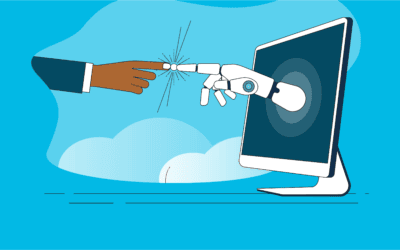Big data > complex sets of data analyzed to make critical decisions.
Small data > tiny clues which uncover larger trends.
Hyper-personal data > information collected from social signals.
Building and nurturing interactions, loyalty and awareness for donors, volunteers as well as the public at large is the root of data collection.
Throwback to 1996
We’d like to take you all back to 1996. Specifically to a time when the internet was all shiny and new and held the promise of curing all our business woes. The information available out there appeared to have no limits and there were all sorts of things we would all be able to do with it. Bright days ahead for everyone. Or so it seemed.
Well, if your organization has been around for more than 20 years, you have probably been gathering and um, “hoarding” data from donors, volunteers and the general public since then.
But who’s really to blame? Back then, we were told to gather as much information as possible. It came from your website, sign up forms, public events, direct mail and/or email campaigns and more. Basically, it was common practice to obtain as much data and by any means and with no opt-in / opt-out rules yet in practice, we pretty much made it up as we went along.
Plus, your data was probably stored in an unsecured database file (an Excel sheet) and saved on a diskette or on an Administrative or Executive Assistant’s PC for safekeeping. It was occasionally updated (manually of course) and most likely never used in actual communication strategies. In the end, this type of outdated, inaccurate, low quality and irrelevant data collection exercise was all a wasted opportunity. Disappointing for everyone.
Fast forward to present day
It’s unfortunate but some non-profits are still utilizing these same techniques 20 years on. They are drowning in a sea of information and really have no idea how to deal with it. They likely accumulate email addresses and data from numerous different channels (newsletters, social, website) and are left with multiple lists to manage and make sense of and lack the know-how to consolidate all this valuable knowledge. This “dirty” data is costing them loyalty, engagement and donations.
Familiarize yourself with the following term: Data hygiene

Bad data hygiene causes dirty data which occurs when your data is improperly managed. Here are the usual dirty data types:
- Incorrect – lack of matching records with value fields (ex: age field = 300)
- Inaccurate – plain old mistakes (typos, email and telephone numbers, etc.)
- Inconsistent – unverified data leading to redundancy and inconsistencies
- Incomplete – missing values for fields (as an example, a missing home address)
- Duplicate – repeated submissions which lead to bad data consolidation and user errors
The following data can also be considered as dirty data:
- Misleading data
- Duplicate data
- Incorrect data
- Inaccurate data
- Non-integrated data
- Data that violates an organization’s rules
- Data without a generalized formatting
- Incorrectly punctuated or spelled data
Data quality, or hygiene, should incorporate methodologies which ensure the completeness, validity, consistency, and correctness of any data collected. Without these processes, dirty data will almost always occur.
Source: https://www.techopedia.com/definition/1194/dirty-data
How does this translate to non-profit organizations and the social sector in plain terms?
When a non-profit organization has dirty data, it:
- affects the correctness of donor data
- limits easy accessibility to data collected
- hinders the ability to segment (or personalize) data collected
- produces inaccurate reports
- increases email bounces for email marketing campaigns
- decreases donations over time
- increases the risk of spamming your donors and the public at large
- erodes audience reach
So now, how can your organization turn the tide and switch up all that information into something which can be easily accessed, analyzed and used?
With so many tools and software available to organizations, it’s not uncommon to feel overwhelmed by the choices. Which should you use? Which one is easy to understand? Which one will make the biggest impact and how quickly?
Whether you opt to go it with your internal team or to ask for help, make sure the chosen solution is able to:
- Deliver an immediate impact and noticeable improvement based on the organization’s current data hygiene state
- Leverage both real-time information and historical details – customers, staff, products, techniques and processes
- Have a rock-solid foundation to be able to use new technologies such as predictive analytics, forecasting and modeling
- Scale and adapt based on the volume, speed and variety of data while keeping everything valid and consistent
Source: https://blog.kissmetrics.com/bad-data-cost/
In the end, the cost of dirty data is not just an IT problem. It’s an issue which affects the short, medium and long-term stability of your non-profit organization. It’s the difference between achieving your fundraising goals for the year or not.
The good news is that it’s not 1996 any more and the IT sector has grown into an integral part of non-profit organizations.
Isn’t it time you give your data a little love and made it part of yours?



